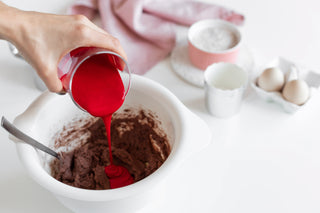The decision by California to bid adieu to Red dye No. 3 has cast a spotlight on the potential risks tied to synthetic food colorings. While this ingredient might make our foods pop with vibrant hues, questions linger about its implications for our health.
Why the Caution Around Red Dye No. 3?
Several reports, including one from the OEHHA, link synthetic food dyes like Red dye No. 3 to hyperactivity and other behavioral issues, particularly in children. Parents have observed mood shifts and attention problems in their young ones after consuming products containing the dye. Moreover, experts, like Dr. Daniel Ganjian, stress the importance of understanding and addressing these potential harms, especially when safer alternatives exist.
Fortunately, the culinary world offers a rainbow of natural alternatives. Whether you're a brand seeking a switch or a conscious consumer, here's a guide to nature's vibrant and healthful palette:
1. Beet Juice
One of nature's most vivid colorants, beet juice can easily replace synthetic red dyes. Not only does it lend a delightful hue, but it also brings along a trove of nutrients. Beet juice is rich in antioxidants, and when used in the right proportions, it won't alter the taste of your foods.

2. Pomegranate Juice
Another red-tinted wonder, pomegranate juice can give your dishes a pink to deep red hue, depending on the quantity used. Beyond the color, it offers a slight tanginess and is loaded with Vitamin C.
3. Carrot Juice
For those seeking a more orangey hue, carrot juice comes to the rescue. Packed with beta-carotene, it not only colors your food but also offers a vision-boosting advantage.
4. Turmeric
Long hailed in the culinary world for its golden yellow tint, turmeric is more than just a coloring agent. Its active compound, curcumin, boasts anti-inflammatory and antioxidant properties, adding a healthful touch to your dishes.

5. Spirulina
Turning our sights to the blues and greens, spirulina, a type of blue-green algae, can impart a lovely blue hue. It's not just for looks, though. Spirulina is protein-rich and brimming with essential amino acids.
6. Saffron
While a bit on the pricier side, saffron lends a brilliant yellow-orange color and a unique flavor. Just a few strands are enough to provide a rich tint.
These alternatives are not just about ditching synthetic additives; they are a journey towards embracing foods that are both delightful to the eyes and nourishing to the body.
With California's groundbreaking ban, there's an open invitation for consumers and companies alike to embrace nature’s vibrant offerings. It’s a step towards a more sustainable, health-conscious future, where every shade on our plate is a testament to nature's bounty.

